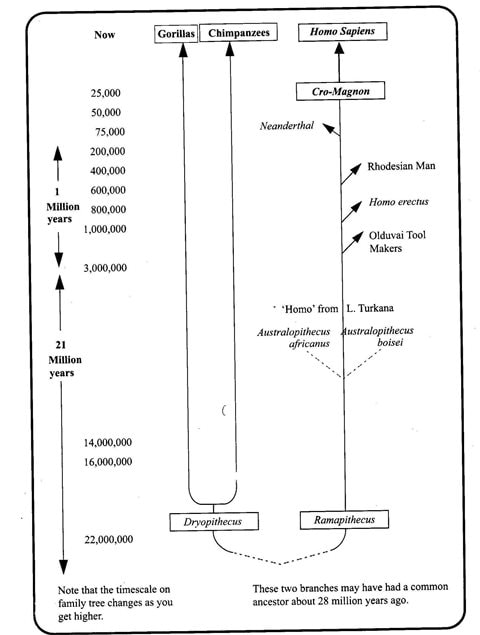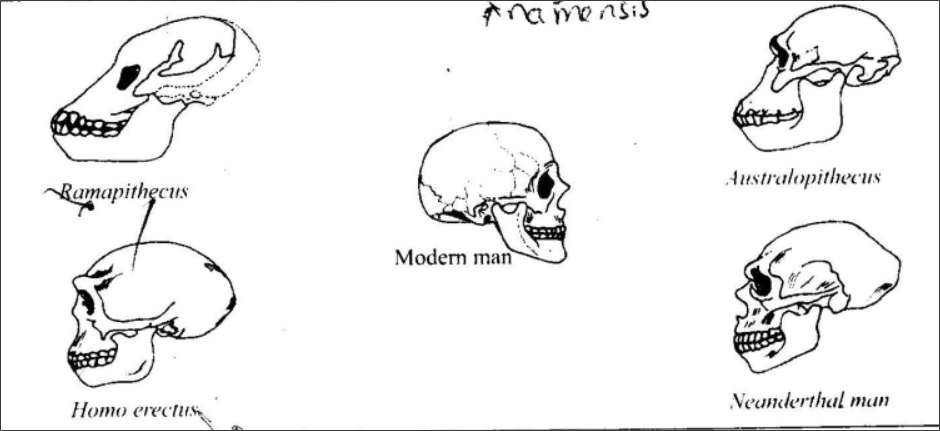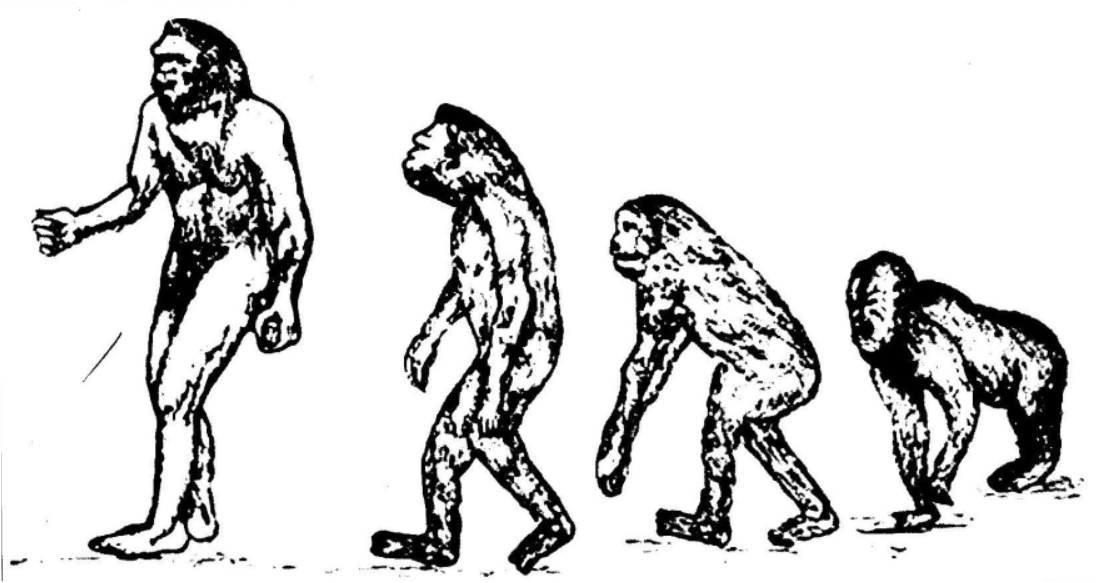Stages through which Man Evolved
Archaeological studies show that man evolved through various stages. At each stage man developed certain physical and cultural features. The following are the stages of the evolution of man.
Aegyptopithecus
The probable earliest ancestor of man was an ape-like creature whose skull was discovered in the Faiyum Valley in Egypt. This creature was herbivorous. It lived about 33 million years ago.
Features:
Dryopithecus Africanus (Proconsul)
The skull was discovered on Rusinga Island in Lake Victoria in 1948. It resembled a chimpanzee. It lived about 25 million years ago.
Features
Kenyapithecus (Ramapithecus)
Also known as the grassland ape, Kenyapithecus lived between 15 million and 7 million years ago. Its remains were first discovered at Fort Ternan, near Kericho in 1961. It was more man-like than other earlier ape. Other discoveries have been made at Samburu Hills, Lake Baringo and Lake Turkana basins.
Features
Australopithecines
Between four and two and a half million years ago, two varieties of small ape-like men came into existence in Southern and Eastern Africa.
These creatures are also referred to as Southern ape-men because their remains were first discovered in Southern Africa at Taung near Kimberley in 1924.
Similar fossils of a hominid belonging to the Australopithecus genius have been found scattered throughout Eastern Africa at such pre-historic sites as Olduvai Gorge and Lake Natron in Tanzania.
Australopithecus used the stone tools he made for defence and to get food. They used sticks and pebble tools to kill small animals for food. They lived in small hunting camps near water bodies and led a nomadic life often migrating following the game they hunted. Hunting was the chief process which set man on the evolutionary path that was to lead to his dominance over all other animals.
Species of Australopithecines
Features of the Australopithecines
Homo Habilis
At Olduvai Gorge where Mrs Mary Leakey found the Zinjanthropus skull, another of her sons, Jonathan Leakey, found the skull fragments of a very young hominid. The pieces were stuck together to form the back part of the head. Later a lower jaw and the bones of a hand were found.
Dr Leakey, convinced that this was a true ancestor of man, called the creature Homo habilis, meaning handy man', 'man with ability' or simply practical man'. Homo habilis thus became the first species of the genus Homo or man. Homo habilis had a bigger brain capacity (775 cc) compared to Australopithecus and was the first true man to make and use tools.
It is believed that both Homo habilis and Australopithecus lived in Africa about one and three quarter million years ago. But Australopithecus then disappeared giving way to new people who had bigger brains. Homo habilis represents a stage of human evolution at which the brain and the hands were beginning to work in closer conjunction.
Features of Homo Habilis
Homo Erectus
The other hominid which lived in Africa about one million years ago is called Homo erectus, also referred to as the "upright man". As the name implies. Homo erectus. resembled the modern man especially the upright walking posture. Some fossils have been found of Homo erectus in Hadar in the Afar Triangle of Ethiopia, about 500 km north-east of Addis Ababa.
Homo erectus is thought to have been more intelligent than Australopithecus and Homo habilis. He had a much higher brain capacity of between 750 and 1000 cc. He could spend a long time chipping away at pieces of stone and bone to make the weapons and tools he needed.
Evidence shows that Homo erectus lived in Africa, Europe and Asia and learnt to make many different and more refined tools like hand axes and later crude spears and arrow heads all from stone. It is believed that Homo erectus' knew how to use fire and had a primitive form of speech compared to any of his predecessors.
Features of Homo Erectus
Homo Sapiens
Homo sapiens was divided into three species.
Rhodesian Man
The Rhodesian man was given this name because his skull was found in Zambia, then called Northern Rhodesia.
Rhodesian man was closer to the modern man than Homo erectus was.
Neanderthal Man
Even closer to the modern man was a hominid called "Neanderthal Man", whose fossils were first found in Neander Valley in Europe. Traces of Neanderthal have been found scattered throughout Europe and the Near East.
The oldest remains of the Neanderthal is dated about 250,000 years old. They consist of one nearly complete skull found in 1933 at Steinheim, Germany and three skull bones found in ancient gravels on the bank of River Thames and Swanscombe in England. More than 100 bones of this hominid have been excavated in South West France, Belgium, Gibraltar, Italy, Germany, former Yugoslavia, the middle East and North Africa.
They skillfully chipped stone tools and with them hunted a wide range of game. The arrangements of their bones found in excavations indicate ceremonial burials which show that they had developed religious practices.
Cro-magnon
Cro-magnon lived in Western Europe about 20,000 years ago.
Features of Homo Sapiens
Homo Sapiens Sapiens
Homo sapiens sapiens brings to the end the long struggle for early man to better himself and become civilised. This is when he made weapons and tools of flint stone, ivory, wood and horn. These tools were more refined than the earlier ones.
He caught fish with bone harpoons, cleaned animal hides with scrapers and made garments out of them with bone needles. Since he was intelligent and was thinking, he made fire and pots. The hunters captured and tamed animals. He began to grow crops, build huts and started leading a settled life.
Figure below depicts the evolution stages man is thought to have gone through.
Features of Homo Sapiens Sapiens
0 Comments
Leave a Reply. |
Archives
November 2023
Categories
All
|
Can't find what you are looking for? Don't worry, Use the Search Box Below.
|
Primary Resources
College Resources
|
Secondary Resources
|
Contact Us
Manyam Franchise
P.O Box 1189 - 40200 Kisii Tel: 0728 450 424 Tel: 0738 619 279 E-mail - sales@manyamfranchise.com |



 RSS Feed
RSS Feed

